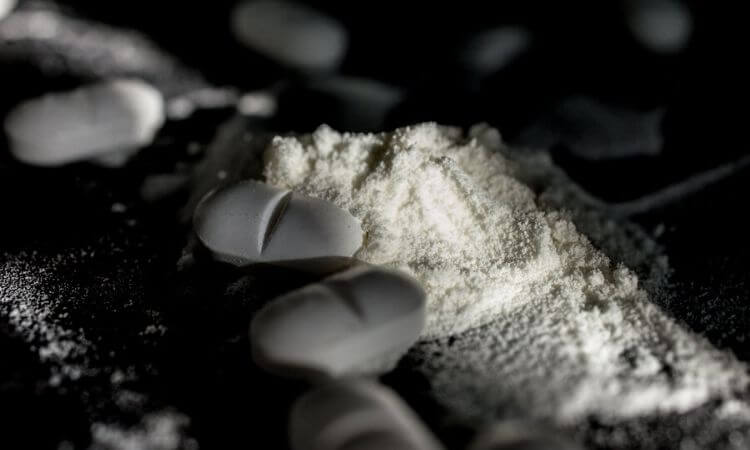
As an opioid used to manage opioid dependence, Suboxone is similar to methadone. However, whereas methadone is tightly controlled and only available at specialized treatment centers or maintenance programs, Suboxone is available from doctors who are authorized to prescribe it.
Suboxone includes two substances: buprenorphine and naloxone. Buprenorphine is a partial opioid agonist that activates receptors in the brain similarly to other opioids such as heroin to mitigate cravings. It activates these receptors to a lesser extent, however, so the user will not experience the intense high associated with full agonists.
Naloxone is an opioid antagonist that is used to reverse overdoses and is included in Suboxone as an abuse-deterrent measure. It only becomes active when the drug is crushed or otherwise subject to tampering, and it mitigates most of the effects of buprenorphine. However, in some cases, the presence of naloxone may not wholly dampen the effects of manipulated Suboxone.
According to a study from 2016, however, found that intranasal buprenorphine/naloxone does have deterrent properties related to transient withdrawal effects. For this reason, it’s desirability for misuse compared to buprenorphine alone is decreased. Suboxone is available in sublingual tablets that dissolve under the tongue or films that are placed between the gums and cheek.
Risks of Suboxone
Despite its relatively low potential for abuse, the use of Suboxone can still be risky. Opioid abusers may take Suboxone in excessive doses, without a prescription, or using alternative methods such as snorting or injecting in an attempt to experience a high. Snorting any drug can lead to an increased risk of side effects, dependence, and addiction, as well as damage to the septum and surrounding nasal tissues.
Does Snorting Suboxone Cause a High?
Despite the aforementioned risks, individuals continue to abuse opioids by tampering with the medication and administering it in a manner other than prescribed. People may snort Suboxone in the hope of producing a stronger high, and dissolvable tablets that go under the tongue may be more likely to be abused by snorting.
With many substances, including opioids, altering the route of administration will cause differences in the effects. A person that crushes and snorts an opioid pain pill will likely feel the effects more rapidly and more intensely than someone who consumes it orally. This key difference has to do with the drug’s ability to enter the bloodstream and brain directly rather than be metabolized by the liver.
Methods of administration that cause drugs to reach the brain faster, such as snorting, smoking, and injecting, will typically produce a shorter, more intense high. Routes of administration that result in the drug being processed more slowly and take longer for it to reach the brain result in more gradual, less intense, and more prolonged effects.
As noted, people may attempt to snort Suboxone to produce a high, but naloxone is included as an abuse-deterrent because of its opioid receptor blocking capabilities. When used as prescribed, the presence of naloxone means little to the user. However, when Suboxone is tampered with, the naloxone is released. This generally discourages abuse and essentially neutralizes the pleasant effects of the buprenorphine.
Although Suboxone’s formulation is intended to reduce the potential high and, therefore, it’s abuse potential, abuse does still occur. People that abuse Suboxone report that they will swallow, snort, and inject the medication in attempts to enhance the effects.
Suboxone is more likely to be misused by people addicted to relatively small doses of other opioids. So, although naloxone should make abuse less likely, it does appear that Suboxone has some potential to induce a high when snorted. That said, any kind of rewarding feelings may be more likely to result in people who are opioid-naive, or who don’t regularly use opioids and don’t have a tolerance to them.
Side Effects of Snorting Suboxone

Suboxone is typically safe when used as prescribed, but as with most other medications, there are potential side effects, which may include the following:
- Headache
- Stomach pain
- Back pain
- Sleep disturbances
- Constipation
- Blurred vision
- Difficulty breathing and swallowing
- Nausea and vomiting
- Loss of appetite
- Weakness and fatigue
- Dizziness
- Sexual side effects
Suboxone, especially when used in combination with other substances that affect serotonin, can also trigger severe mental and physical health complications related to a condition called serotonin syndrome. These include the following:\
- Extreme agitation
- Hallucinations
- Confusion
- Muscle twitching
- Elevated heart rate
- Shivering and chills
- Diarrhea
- Impaired coordination
The naloxone in Suboxone may also abruptly elicit symptoms of opioid withdrawal when the drug is tampered with and snorted, smoked, or injected. These unpleasant withdrawal symptoms may include the following:
- Sleep difficulties
- Anxiety
- Elevated heart rate
- High blood pressure
- Hyperreflexia
- Increased sweating
- Muscle spasms
- Goosebumps
- Stomach pain and cramps
- Nausea and vomiting
- Diarrhea
- Muscle and bone aches
Snorting an opioid medication is also associated with numerous other harmful effects, including the following:
- Bloody nose
- Nasal congestion or drainage
- Oral ulcers
- Facial and ear pain
- Edema in the face
- Trouble speaking
- Difficulty swallowing
- Damage to mouth and nose
Can Snorting Suboxone Cause an Overdose?

When using Suboxone, it is vital always to use the medication as directed by a physician. Though overdoses are rare due to the drug’s ceiling effect, they are possible. This is especially true when Suboxone is used with other intoxicating substances, such as sedatives or alcohol.
Signs of an overdose related to Suboxone include the following:
- Pinpoint pupils
- Severe dizziness
- Impaired coordination
- Vision problem
- Profoundly depressed breathing
- Extreme drowsiness
- Loss of consciousness or coma
- Death
Opioids generally come with the risk of profound respiratory depression when used in excessive doses. However, as a partial agonist, buprenorphine has a ceiling effect in which the risk of respiratory issues and other problems will not increase correspondingly as the dose increases. Instead, these effects peak at a certain point, making overdose much less likely for this drug.
When Suboxone is used in conjunction with other substances, especially those that depress the central nervous system, a higher risk of a life-threatening overdose occurs. These substances include, but are not limited to, the following:
- Benzodiazepines
- Alcohol
- Other opioids
- Tranquilizers
Abuse, Dependence, and Addiction
Given buprenorphine’s delayed onset, mild effects, and relatively long duration cycle, the effect on the brain’s reward system is believed to be minimal, as is its potential for addiction. As noted, however, Suboxone abuse may lead to physical dependence and addiction more rapidly than if it is used as directed.
When a person becomes dependent on Suboxone, their body has become accustomed to its presence and will not be able to function correctly without it. Once dependence has developed, full-blown addiction may soon follow, which is characterized by compulsive-seeking behavior despite the incurrence of negative consequences.
Getting Help for Suboxone Addiction
If you or a loved one is abusing Suboxone, seeking professional help is a vital step to take to stop using the drug most safely and comfortably possible.
Midwood Addiction Treatment offers comprehensive programs facilitated by caring addiction professionals that include essential services such as psychotherapy, counseling, group support, aftercare planning, and more.
People struggling with the abuse of Suboxone or addiction may face a challenging battle, but fortunately, assistance is available. If you are seeking help for yourself or a loved one in your life to overcome Suboxone abuse, call us today to discuss treatment options and find out how we can help!